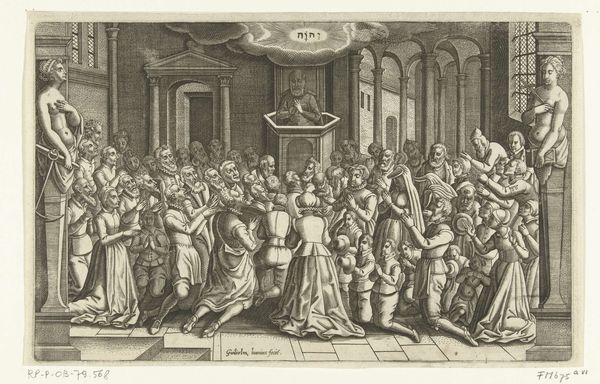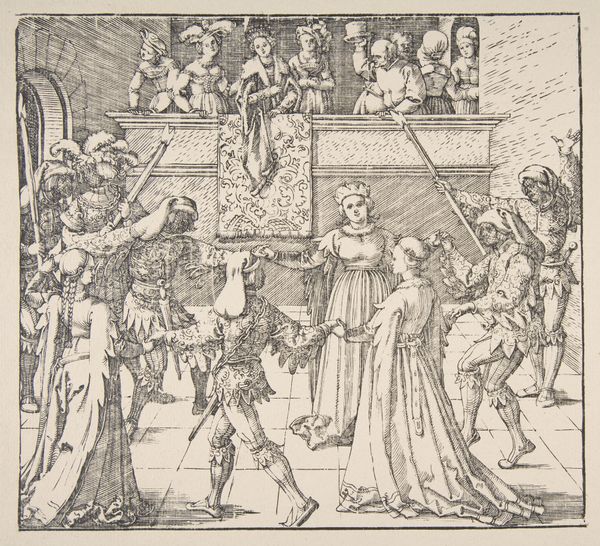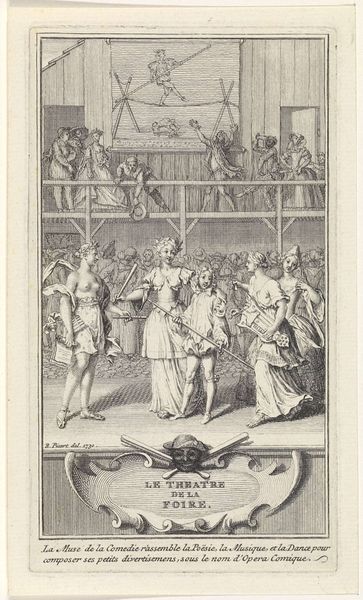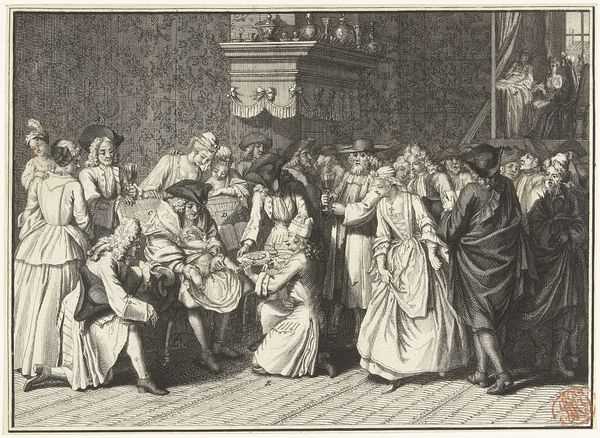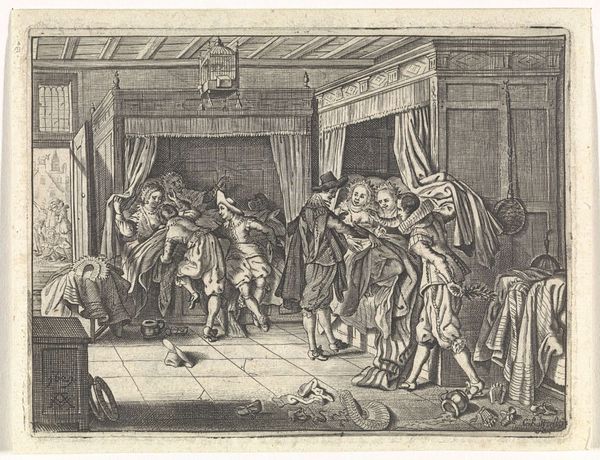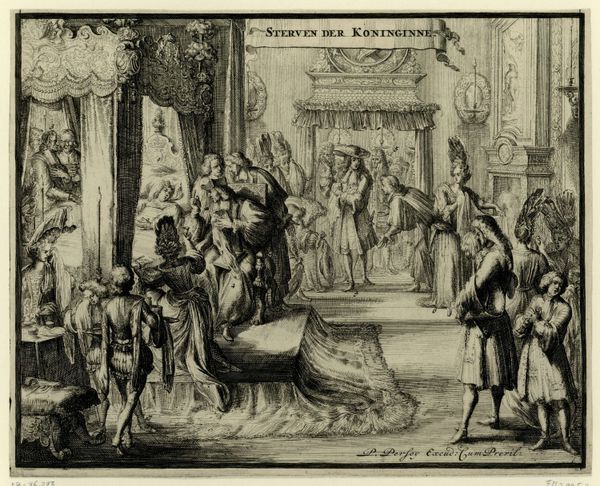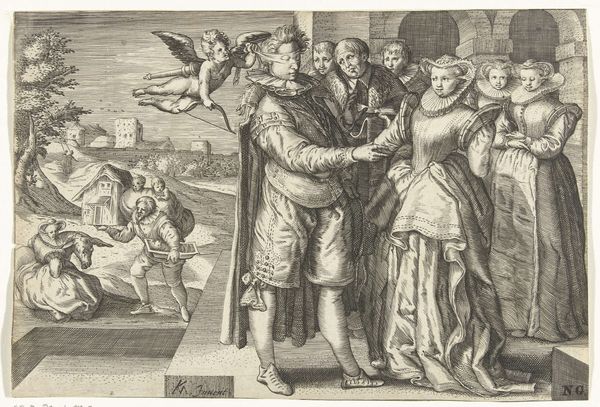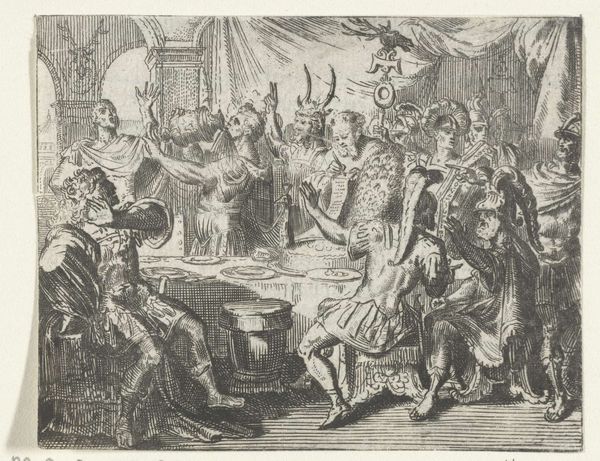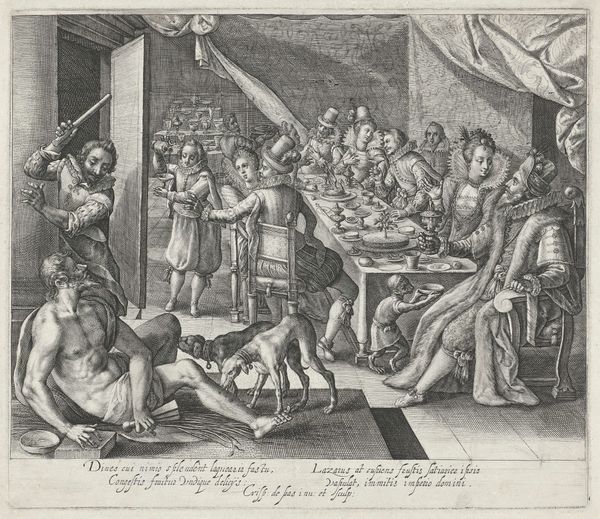
print, engraving
#
narrative-art
#
baroque
# print
#
figuration
#
genre-painting
#
history-painting
#
engraving
Dimensions: height 172 mm, width 269 mm
Copyright: Rijks Museum: Open Domain
Curator: Here we have "Tweedracht onder de Leidenaren, 1574", or "Discord among the People of Leiden, 1574," an engraving, likely dating to the late 17th century. It's currently held in the Rijksmuseum collection. Editor: Chaos! That's the first word that leaps to mind. It's a snapshot of something unraveling. All these gesturing figures, and under "Mijterey." Is that supposed to be mockery? Curator: Possibly. Engravings at this time often served a didactic purpose, shaping public opinion. The image depicts a historical event, a moment of internal conflict within Leiden. Let’s think about the materials: an engraving allows for relatively mass production and dissemination. Consider the socio-political context; the production is not neutral. Editor: It does feel rather biased, doesn’t it? The composition is so tightly packed. All those faces... And there is an almost theatrical quality with the draped curtain that lends the scene a feeling that this isn’t really true, even though its message comes through clear and loud, just a message or interpretation of it, perhaps. Curator: Yes, the performative aspect cannot be overlooked. It attempts to frame a specific narrative of disunity, one that benefits certain power structures. Editor: There's a dark energy humming underneath all this strife, I am intrigued by the shirtless men and the covered and regal seated around a table in such a busy interior. So many social undercurrents represented with simple sharp cuts. Curator: Precisely. And consider who commissioned and distributed this image. What did they want viewers to think about Leiden, about discord, about power? Editor: Thinking about all of this, makes this artwork far less chaotic, but extremely complex. Almost oppressive complexity—that wants me to stay away from such intricate entanglements of society in the 1600s. Curator: The artwork, initially appearing chaotic, becomes, as we delve deeper into its materiality and historical production, a tool for manipulating perspective and driving ideology. Editor: I see more stories here than at first glance, stories of social tension, manufactured consent. It's a complex tableau.
Comments
No comments
Be the first to comment and join the conversation on the ultimate creative platform.

